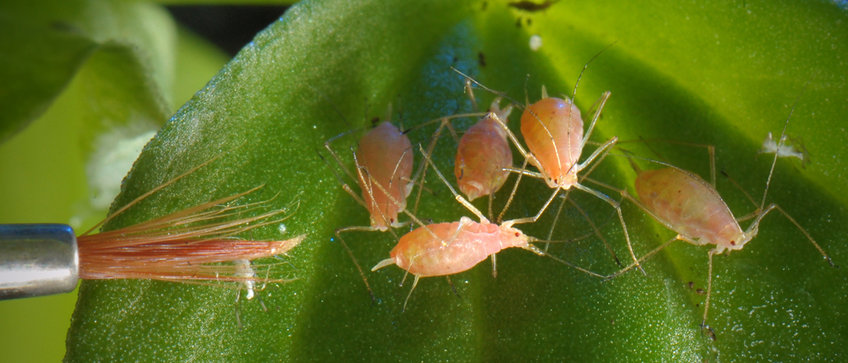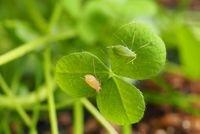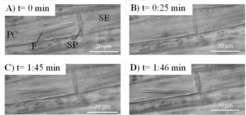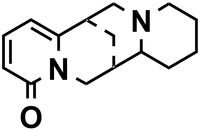
Chemical Communication in Plant-Aphid Interactions
Mechanisms that maintain and separate pea aphid host races
The pea aphid, Acyrthosiphon pisum (Harris), is actually a complex of distinct races that each is specialized on a native host plant of the legume family [Peccoud, J., Ollivier, A. et al. (2009) and Peccoud, J. and J. C. Simon (2010)]. Some aphid races are able to survive on several plant species, while others only survive on just one or a few plant species. However, all pea aphid host races can develop on the universal host plant Vicia faba. This ecological specialization can be considered as one of the first steps towards sympatric speciation since the host fidelity of races leads to assortative mating which reduces gene flow between host-races. In our group we enter into the questions why some aphid races are able to feed on a certain legume plant whilst the same plant is unsuitable for another aphid race. What makes certain legume plants resistant to some aphid races? And what might aphid races force to feed on a certain legume plant?
Pea aphids and their facultative bacterial endosymbionts: exploring the occurrence, effects and mechanism of a widespread symbiosis

Kristina Schädel, Dr. Elizabeth Pringle, Dr. Grit Kunert
Many herbivorous insects harbor diverse communities of endosymbiotic bacteria in their body. The pea aphid (Acyrthosiphon pisum) accommodates Buchnera aphidicola as obligatory endosymbiont. It provides the aphids with essential amino acids, which are of limited availability within the aphid’s diet.
In addition, many pea aphids host other bacteria as facultative endosymbionts, such as strains of Regiella, Serratia and Rickettsia. Their biological role, however, is just partially known. In some cases there is an association between a particular facultative endosymbiont and a certain pea aphid host-race (biotype). Thus the endosymbiont Regiella insecticola is highly associated with the pea aphid biotype specialized on clover species, i.e. Trifolium pratense.
In order to determine the importance of that particular facultative endosymbiont for its aphid host, we examine its impact on the insect’s performance, feeding behavior and its influence on aphid host-plant suitability. We will study how host plants respond hormonally, metabolically and genetically to feeding by the pea aphid clover biotype containing Regiella insecticola or not. We will compare this plant defense response to the response induced by pea aphid races which are not native to clover.
Phloem associated defense mechanisms in relation to host races in the pea aphid complex

Dr. Maria Paulmann, Dr. Alexandra Furch, Dr. Grit Kunert
Plants have evolved striking defenses to protect themselves from aphid attack. When pea aphids puncture sieve elements and other cells upon feeding, Ca2+-influx will lead to an accumulation of reactive oxygen species (ROS), the formation of callose, the dispersion of forisomes and further defense reactions. Forisomes for instance are large protein bodies situated in the sieve elements of legumes that reversibly block the phloem-mass flow by dispersing and which can prevent aphid feeding. We will investigate these early plant defense mechanisms and see whether they differ between plants infested with native and non-native aphid host races and therefore, might play a role in aphid host race maintenance. We will study the oxidative state and the configuration of forisomes in different legume species infested by several pea aphid host races.
The role of quinolizidine alkaloids (QA) from Genista (Fabaceae) in aphid-plant interactions

QA’s represent about 2% of the approximately 7000 known alkaloids from plants, and they are characteristic metabolites of the genus Genista belonging to the legume family (Fabaceae). QA’s are able to stimulate and even paralyze the central nervous system with sometimes fatal consequences for the organism. Also non-native pea aphid races die quickly when trying to feed on Genista plants, or diet containing Genista extracts. The pea aphid host race native to Genista plants, however, is able to perform on Genista plant species as well as on diet containing Genista extract.
In this project we will investigate the role of QA compounds and their relevance as defense substances for both the plant and the insect.
Former group members
Dr. Eduardo Hatano: PhD thesis (2009) Chemical communication in an aphid-natural enemy system: new mechanisms of aphid alarm signalling and wing induction. Supervised by Prof. Wolfgang Weisser , now PostDoc at North Carolina State University, Department of Entomology, Raleigh NC, USA
Carolina Reinhold: Diploma thesis (2011): Der Einfluss von (E)-β-Farnesen auf das Wirtswahlverhalten von Myzus persicae
Susanne Seyfarth: Diploma thesis (2013): Der Aminosäure- und Zuckergehalt von Pflanzen in Abhängigkeit vom Blattlausbefall
Daniel Rosenberger: Technical assistant (2008-2012)
Dr. Ilka Vosteen: PhD thesis (2015): Searching behavior of aphid natural enemies and its implication for host-race maintenance in the pea aphid complex; now PostDoc at Wageningen University and Research, Laboratory of Entomology, Netherlands
Dr. Alexander Schwarzkopf: PhD thesis (2017): Electrophysiological localization of plant factors affecting pea aphid (Acyrthosiphon pisum) compatibility to host and non-host plants; now Coordinator International Mobility at Graduate Academy, FSU Jena, Germany
Dr. Carlos Arcos Sanchez: PhD thesis (2018): Legume chemistry and the specificity of the pea aphid (Acyrthosiphon pisum) host race; now PostDoc at Institute for Inorganic and Analytical Chemistry, FSU Jena, Germany
Michael Möbes: Intern and Technical assistant (2017-2018)
Dr. Torsten Knauer: Research assistant (2017-2019): Application of aphid stylectomy for the collection of legume phloem sap and its chemical analysis


